
Sweet Baby James is the second studio album by American singer-songwriter James Taylor, released on February 1, 1970, by Warner Bros. Records.
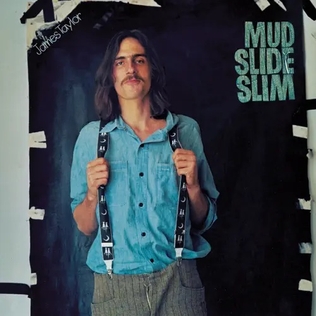
Mud Slide Slim and the Blue Horizon is the third studio album by American singer-songwriter James Taylor, released in April 1971 by Warner Bros. Records. The album was recorded between early January and late February of the same year.
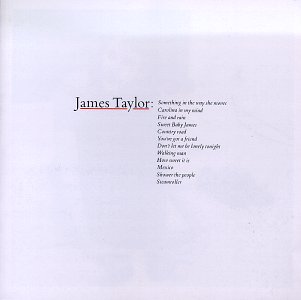
Greatest Hits is the first greatest hits album by American singer-songwriter James Taylor, released in November 1976 by Warner Bros. Records. It remains Taylor's best-selling album, with over 11 million units being sold in the United States, making it among the best-selling albums of the 1970's.

One Man Dog is the fourth studio album by singer-songwriter James Taylor. Released on November 1, 1972, it features the hit "Don't Let Me Be Lonely Tonight", which peaked at number 14 on the Billboard charts on January 13, 1973. The follow-up single, "One Man Parade", also charted but less successfully, peaking at number 67 in the US and reaching number 55 on the Canadian Adult Contemporary chart. The basic tracks were primarily recorded in Taylor's home studio.
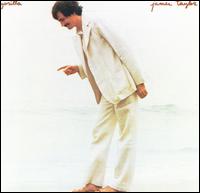
Gorilla is the sixth studio album by American singer-songwriter James Taylor. Released in May 1975, it was more successful than Walking Man, his previous release. Two album tracks released as singles, "Mexico" and "How Sweet It Is ", rose to the top five on the Billboard charts. This would be Taylor's second-to-last album of new material for Warner Bros. Records, his last being In the Pocket. In many ways, Gorilla showcased Taylor's electric, lighter side that became evident on Walking Man. The song "Sarah Maria" is about his daughter Sally. His then-wife Carly Simon was featured on "How Sweet It Is ", originally recorded by Marvin Gaye. Jimmy Buffett recorded "Mexico" on his 1995 album Barometer Soup and performed "Lighthouse" during his Salty Piece of Land tour of 2005.

Flag is the ninth studio album by American singer-songwriter James Taylor released on May 1, 1979. The album included songs from Taylor's music score to Stephen Schwartz's Broadway musical, Working, based on the book by Studs Terkel.

The Best of James Taylor is the fourth compilation album by American singer-songwriter James Taylor released by Warner Bros. Records in 2003. The same album was released in Europe as You've Got a Friend: The Best of James Taylor.
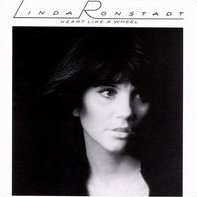
Heart Like a Wheel is the fifth solo studio album by Linda Ronstadt, released in November 1974. It was Ronstadt's last album to be released by Capitol Records. At the time of its recording, Ronstadt had already moved to Asylum Records and released her first album there; due to contractual obligations, though, Heart Like a Wheel was released by Capitol.

Sister Kate is singer Kate Taylor's first album, released in 1971.

"Handy Man" is a song written by singer Jimmy Jones and songwriter Otis Blackwell. Recordings by Del Shannon and also The Sparks Of Rhythm list Charles Merenstein as a co-writer, as does BMI. The Sparks Of Rhythm version on the Apollo 541 single version released in 1959 credits Andrew Barksdale and Merenstein as writers omitting Jimmy Jones. The song is noted for Jones singing "Come-a, come-a come-a come-a, come come-a, yeah" lyrics, which are heard at the beginning as well as in the coda of the song, before the song's fade.
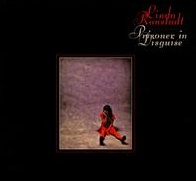
Prisoner In Disguise (1975) is Linda Ronstadt's sixth solo LP release and her second for the label Asylum Records. It followed Ronstadt's multi-platinum breakthrough album, Heart Like a Wheel, which became her first number one album on the US Billboard 200 album chart in early 1975.

Get Closer is the eleventh studio album by singer Linda Ronstadt, released in 1982.

Hasten Down the Wind is the seventh studio album by Linda Ronstadt. Released in 1976, it became her third straight million-selling album. Ronstadt was the first female artist to accomplish this feat. The album earned her a Grammy Award for Best Pop Vocal Performance, Female in 1977, her second of 13 Grammys. It represented a slight departure from 1974's Heart Like a Wheel and 1975's Prisoner in Disguise in that she chose to showcase new songwriters over the traditional country rock sound she had been producing up to that point. A more serious and poignant album than its predecessors, it won critical acclaim.
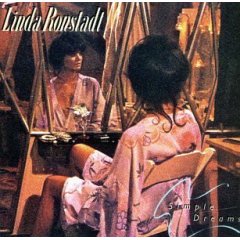
Simple Dreams is the eighth studio album by the American singer Linda Ronstadt, released in 1977 by Asylum Records. It includes several of her best-known songs, including her cover of the Rolling Stones song "Tumbling Dice" and her version of the Roy Orbison song "Blue Bayou", which earned her a Grammy nomination for Record of the Year. The album also contains covers of the Buddy Holly song "It's So Easy!" and the Warren Zevon songs "Poor Poor Pitiful Me" and "Carmelita". The album was the best-selling studio album of her career, and at the time was the second best-selling album by a female artist. It was her first album since Don't Cry Now without long-time musical collaborator Andrew Gold, though it features several of the other Laurel Canyon-based session musicians who appeared on her prior albums, including guitarists Dan Dugmore and Waddy Wachtel, bassist Kenny Edwards, and producer and multi-instrumentalist Peter Asher.

Living in the USA is the ninth studio album by American singer Linda Ronstadt, released in 1978. The album was Ronstadt's third and final No. 1 on the Billboard 200 album chart.

Greatest Hits is Linda Ronstadt's first major compilation album, released at the end of 1976 for the holiday shopping season. It includes material from both her Capitol Records and Asylum Records output, and goes back to 1967 for The Stone Poneys' hit "Different Drum."

Mad Love is the tenth studio album by singer Linda Ronstadt, released in 1980. It debuted at #5 on the Billboard album chart, a record at the time and a first for any female artist, and quickly became her seventh consecutive album to sell over one million copies. It was certified platinum and nominated for a Grammy.

Lovescape is the nineteenth studio album by the American singer Neil Diamond. Released in 1991, it peaked at number 44 on the Billboard 200. "Hooked on the Memory of You" was a duet with Kim Carnes, while "Don't Turn Around" was co-written by Diane Warren. It is the last album, till 12 Songs, to credit him with playing guitar, but he may have contributed some uncredited guitar work on previous or subsequent albums.

"Bartender's Blues" is a song written by James Taylor and first released on his 1977 album JT. It was also released as the B-side of the lead single from JT, "Handy Man". It has since been covered by George Jones and other artists.

What's Wrong with This Picture? is the second album by the singer-songwriter Andrew Gold. It was released in 1976 on Asylum Records. It includes the hit single "Lonely Boy" which peaked at No. 7 on the Billboard singles chart featuring Linda Ronstadt on backing vocals.




















